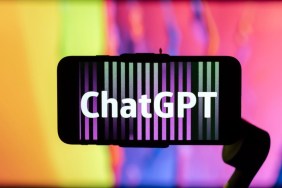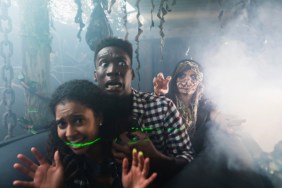Did you talk to Gore about just sort of the genre and the type of hero you were crafting and molding together?
Yeah. Yeah.
What were some of your conversations about that? What were your concerns?
You know, it was about… It couldn’t feel two-dimensional. It can’t feel like he is a superhero who doesn’t struggle with any decisions and just does the right thing. He’s human. That’s what makes him a hero, is he’s a human who knows, “If I decide to do this, there’s a real good chance I could get hit in the face, and I hate getting hit in the face but I’m gonna do this anyway ’cause it’s the right thing to do.” As opposed to the superhero, who’s like, “I don’t have to eat, I don’t have to sleep, I’m just gonna do the right thing.” He had to struggle. That’s what makes him a little bit different from the original “Lone Ranger” television series. The original series, people wanted to… you know, partially because he was born out of The Depression and out of World War II and the Korean War conflict, people just wanted a hero. They wanted to zone out on television and watch a hero. You can’t do that anymore, especially not for two hours. People get bored as shit, so we had to make it fresh.
Was your relationship with Tonto already on the page, or was that developed over time?
Both. I mean, a lot of it was on the page, but we realized that a lot of this movie would fall down to whether or not the relationship worked between the two of these guys. So, yes it was on the page and brilliantly written on the page by Justin Haythe, but then we spent a lot of time working on it. A lot of time discussing, “In this scene, where is our relationship? Where in the arc of how far we traveled together, are we at this specific point? Okay, so that will lead us to this next point, in the next scene so let’s remember that.” It’s a lot of those kinds of things.
What was the name of the horse who played Silver, or was it multiple horses?
There was Leroy, Cloud, Silver…
An actual Silver.
Yeah, there was an actual Silver…. Ghost. No, there was no Ghost.
You’re thinking of “Game of Thrones.”
Yeah.
There are a lot of horses. We’ll leave it to, “There were a lot of horses.” Did you have to establish a relationship with the horse? Had you done a lot of horseback riding before, or was this new to you?
Yeah. Done a lot of horseback riding but these movie horses, you don’t need to establish a relationship. I mean, they know their job.
They are trained.
They are there to do their job. You are encouraged not to touch them, not to feed them. Certainly don’t touch their faces. They are there to be work horses.
They’re divas, in a way.
Totally. Classical music played for ’em, the whole thing. Yeah.
Nice. Was there a lot of CGI in your stunt work in this movie?
No.
Did you get to do any of it?
Yeah. We did six days total of green screen.
That’s not bad. That’s very small.
For a 160-plus-day movie, six days is nothing. Everything else was real, everything else we did, whether it was, “Alright, we’re gonna chain you up to this thing and swing you around in a circle.”
You actually did that?!
Oh yeah.
Was that nauseating? How did that work?
Well, we spun for like, 20 minutes so you feel at one point like, all of the blood has just gone to your feet.
Is that a bonding experience? You feel like, “We’ve shared something, Johnny.”
Totally. It’s akin to like, “There are no enemies in the fox holes.” We both went through something… I guess there’s no (?) in the fox holes… Wait a second…. “There’s no strangers in the trenches?” What is it?
I know that expression, sort of, but I couldn’t give you the correct version offhand.
Basically, we went through something hellacious together and it kind of brought us together. I mean obviously, we weren’t being shot at, so it’s a different example but it was great… We were being shot at, technically.







